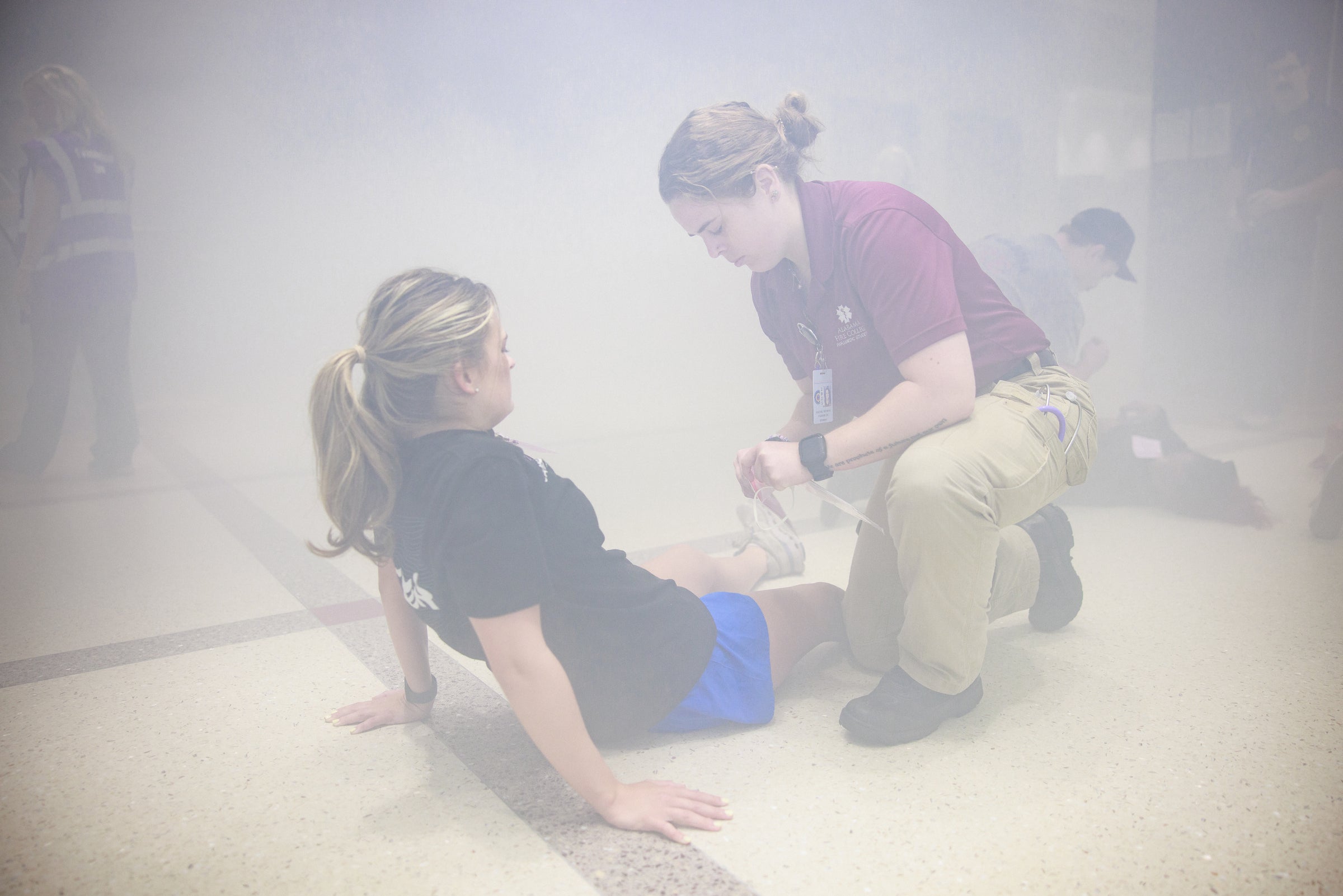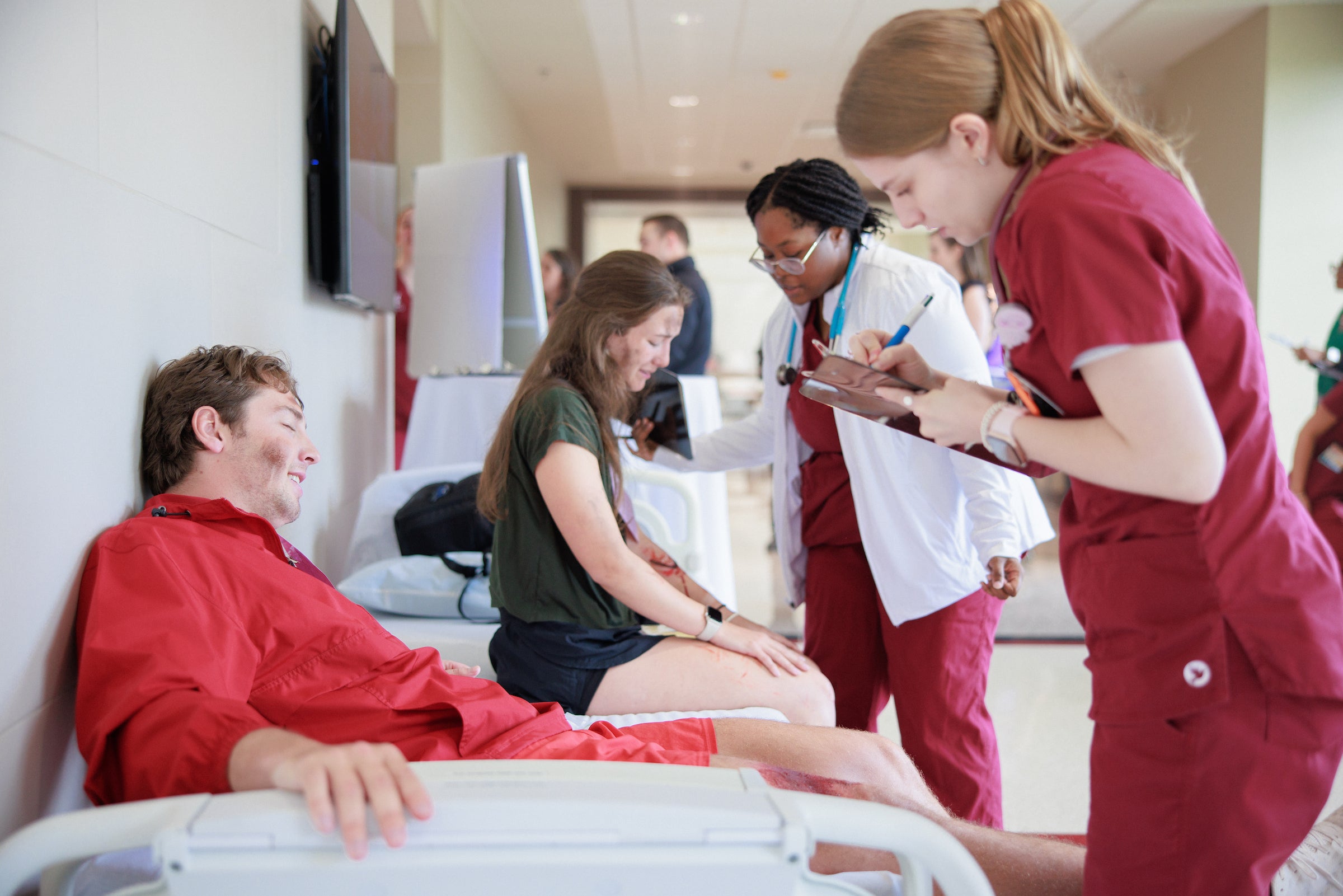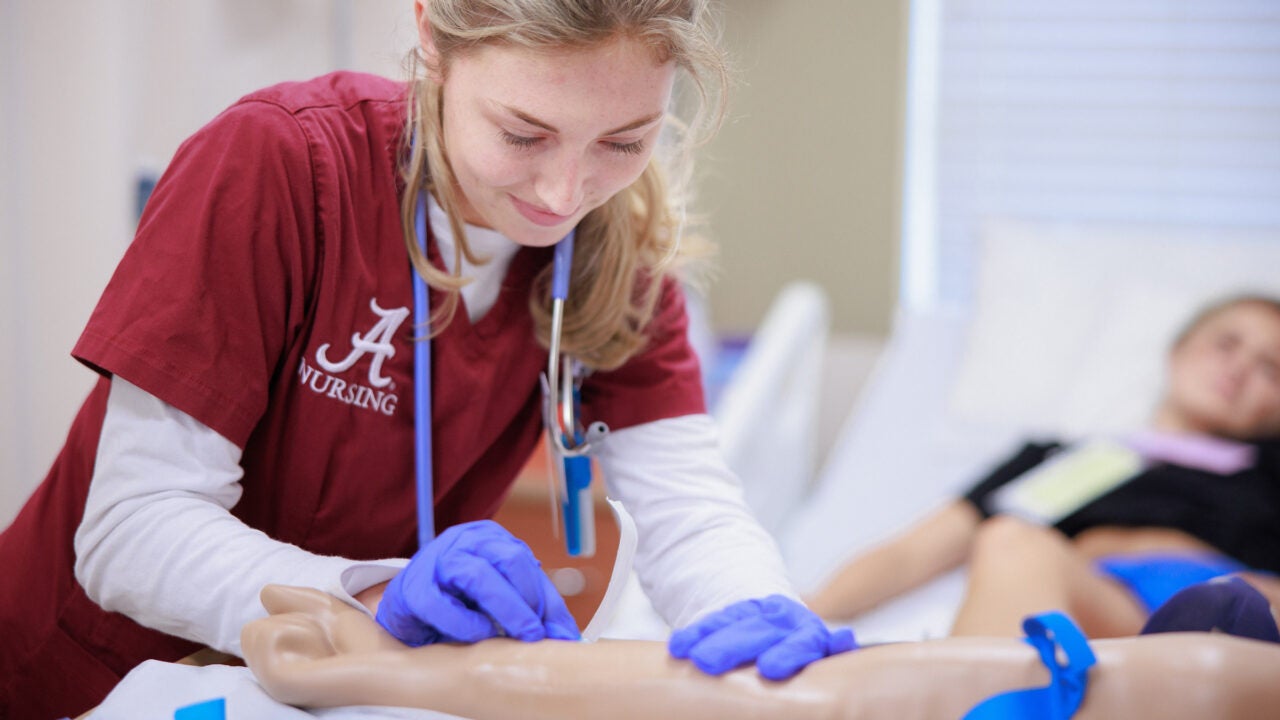TUSCALOOSA, Ala. — The University of Alabama Capstone College of Nursing conducted a large-scale mass casualty disaster simulation focused on a structural collapse scenario. Students and professionals from multiple disciplines and agencies within the University and Tuscaloosa community collaborated to simulate a real emergency.
UA’s Capstone College of Nursing, College of Arts and Sciences and College of Community Health Sciences collaborated with the UA Police Department, Tuscaloosa Fire Rescue, Alabama Fire College and NorthStar EMS to conduct the simulation.
About 150 students experienced a realistic response to a complex mass casualty incident, bridging classroom learning with real-world application in a safe and supportive environment.
“Students rarely have the opportunity to train in a high-intensity, hands-on environment alongside community partners and health care professionals,” Dr. Heather Cole, director of simulation at CCN, said. “Through the spirit of collaboration, this experience created meaningful learning outcomes for every student involved.”



Participants from nursing, EMS, fire and law enforcement worked side-by-side to triage victims, coordinate communication, stabilize patients and transport them to care, allowing students to learn how to function effectively in a real-world crisis situation
This immersive experience built students’ confidence and competence in population health, disaster preparedness, triage, prioritization and resource management — vital skills for future health care professionals. The simulation also promoted essential clinical reasoning and communication while also strengthening leadership, decision-making and collaboration across systems, preparing students to transition more seamlessly into practice.
“At The University of Alabama, we don’t just teach — we prepare students to lead,” Cole said. “Events like this simulation demonstrate how legends are made through innovation, grit, service and collaboration. By standing shoulder to shoulder with first responders and fellow health care professionals, our students gained the confidence and skill to rise in moments that matter most for our community.”
The University of Alabama, part of The University of Alabama System, is the state’s flagship university. UA shapes a better world through its teaching, research and service. With a global reputation for excellence, UA provides a forward-thinking environment and over 200 degree programs on a beautiful, student-centered campus. A leader in cutting-edge research, UA advances discovery, creative inquiry and knowledge through more than 30 research centers. As the state’s largest higher education institution, UA drives economic growth in Alabama and beyond.
